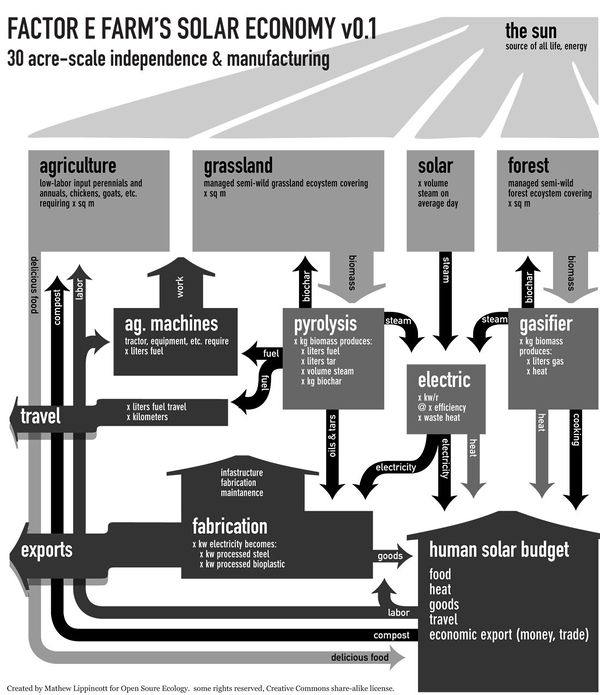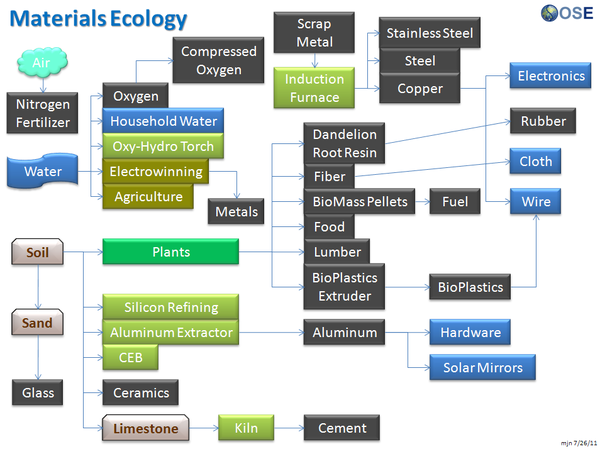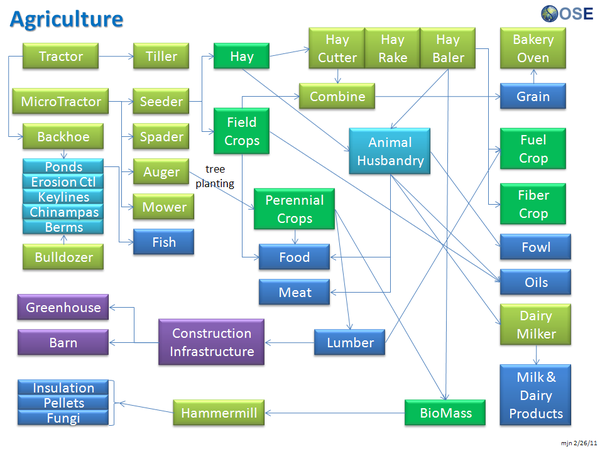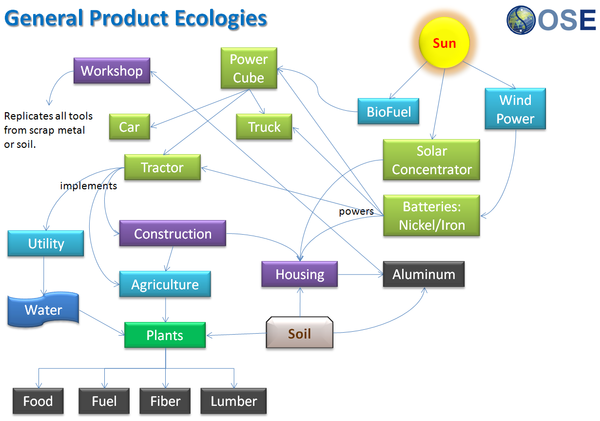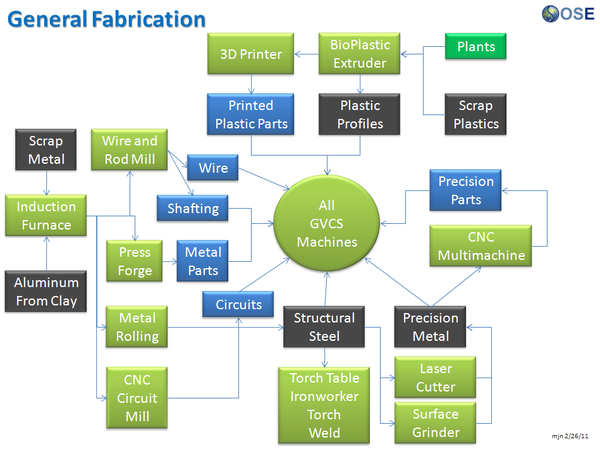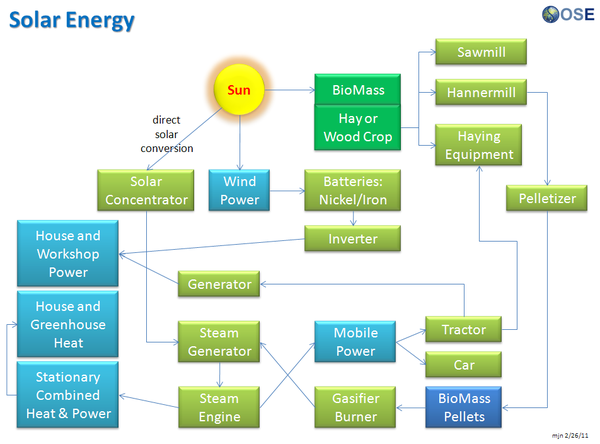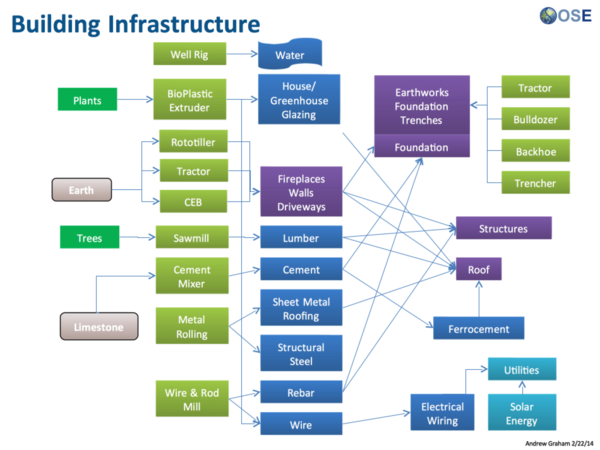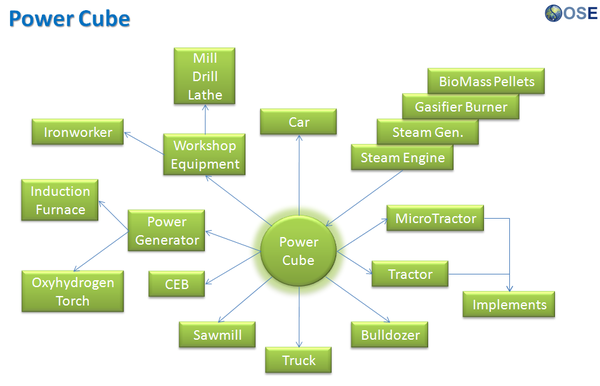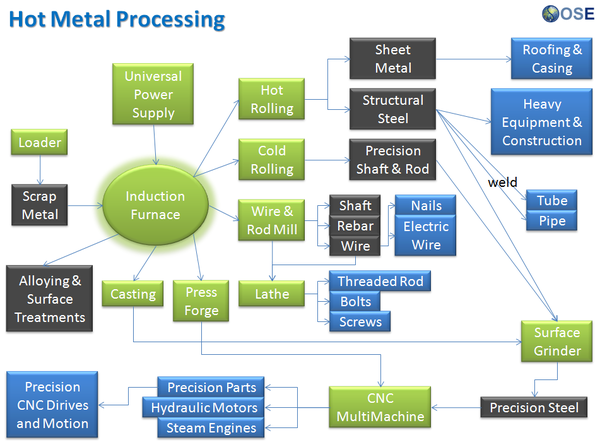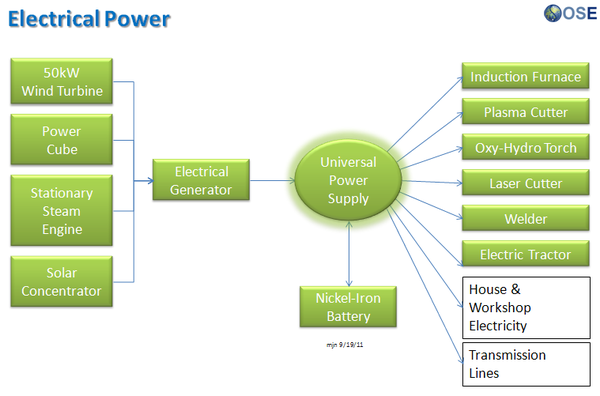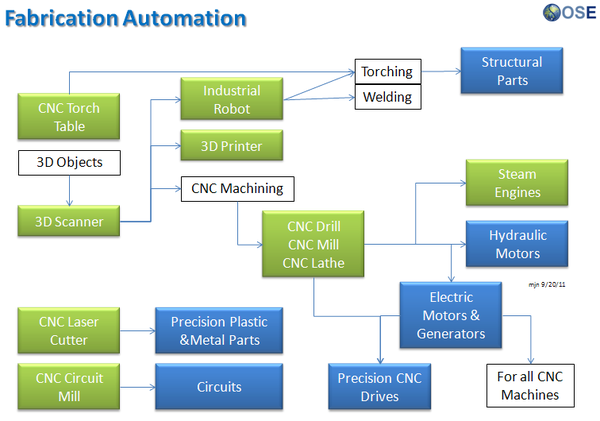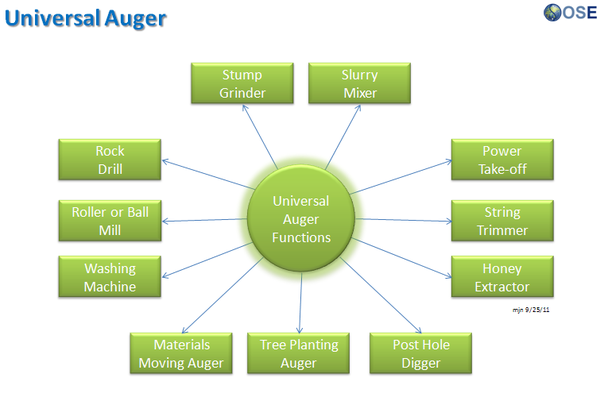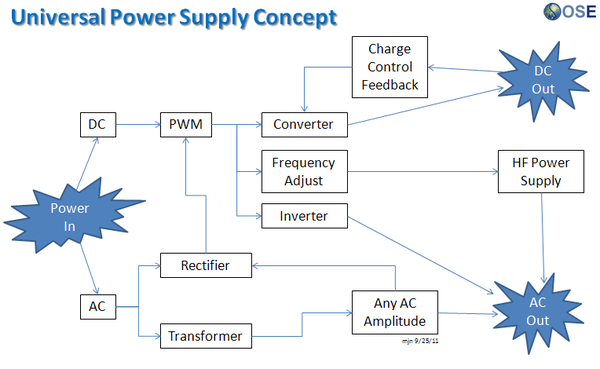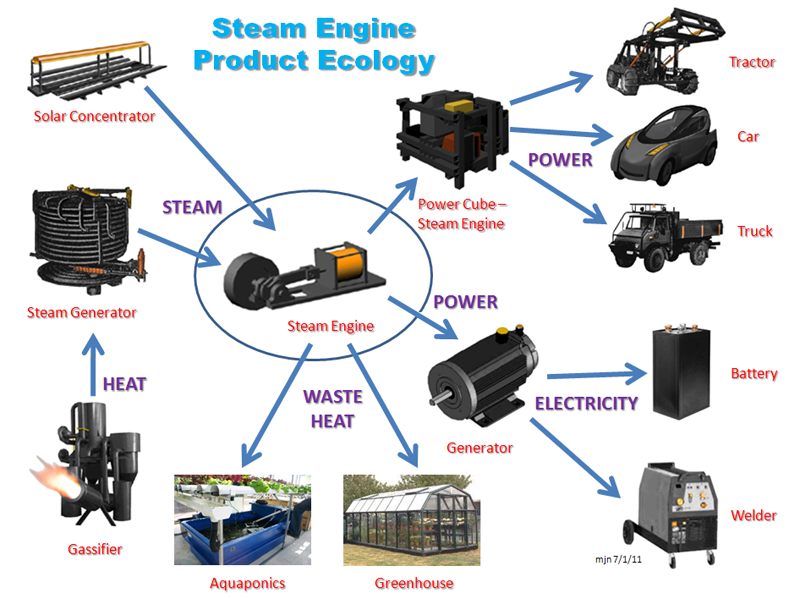Product Ecologies: Difference between revisions
No edit summary |
|||
| Line 11: | Line 11: | ||
{| style="width:100%;" cellpadding="3" cellspacing="0" border="0" align="left" | {| style="width:100%;" cellpadding="3" cellspacing="0" border="0" align="left" | ||
'''Note: first two graphics should be refactored to make it simpler - Rocks (concrete, PV, semiconductors), sunlight (electricity, fuels), plants (replacement of fossil fuels, chemicals), soil (soil food web and food), water (fluid of life, power (steam, hydro), hydrogen, oxygen). ''' | |||
|-align="left" | |-align="left" | ||
![[Image:7b-Materialseco.png|border|600px|Materials Ecology]] | ![[Image:7b-Materialseco.png|border|600px|Materials Ecology]] | ||
Revision as of 18:39, 6 February 2019
see also: Pattern Language. Note: see notes on Emergent Ecologies
Introduction
Product Ecologies illustrate how the different tools and products of the GVCS work together. This includes how the tools utilize onsite resources for building a modern infrastructure. This also includes module based design, where machine modules can interchange between various machines. For example, motors, power units, and implements interchange within the tractor, microtractor, car, truck, fabrication, and bulldozer infrastructures. Ecologies can also refer to how certain machines make other machines, with the goal of creating closed-loop material cycles - such as the induction furnace contributing to the production of tractor parts, construction roofing, or wire from recycled metal feedstock. The goal is to create closed loop industrial ecologies that contribute to environmental and societal regeneration, as humanity regains balance with its natural life support systems.
Ecologies
Links
- Factor e Live Distillations - 10 part video series (about 10 minutes each)on product ecologies from 2009
- Pattern Language
- Early Product Ecology Graphics
- Fab Lab
